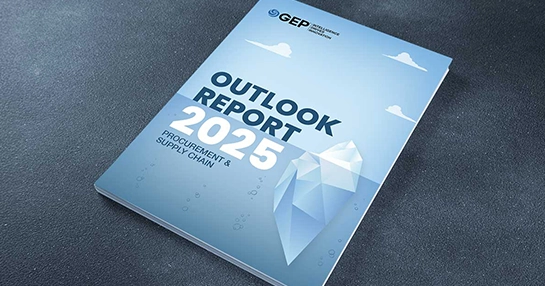
Work Orders vs. Purchase Orders: Big Spend, Basic Slip ups
- When work orders and POs don’t connect, it leads to wasted spend, audit issues, and extra work for your teams.
- Most companies have the tools. What’s missing is smarter integration and clearer processes.
- Tying work orders to POs early is key to aligning people and processes.
October 01, 2025 | Procurement Strategy 5 minutes read
Let’s be honest—most people in procurement or ops don’t lie awake at night thinking about work orders and purchase orders.
They’re basic. Everyone knows what they are. You’ve probably handled thousands of them. But here’s the thing: even in some of the most mature, well-resourced companies, these two processes don’t always talk to each other. And when they don’t, the cost isn’t just a little confusion. It’s lost money, poor visibility, and endless clean-up work for teams who should be focused on bigger things.
So no, it’s not a flashy topic. But if you’re leading procurement or operations in a global enterprise, it’s one you can’t afford to ignore.
Same Team, Different Playbooks
On paper, it’s simple.
A work order kicks off a task—like fixing a conveyor belt, servicing HVAC, or installing new hardware. It’s an instruction to do something, usually driven by operations or facilities.
A purchase order is the official go-ahead to spend money. It’s how you actually pay for the service, parts, or labor tied to that work.
Ideally, they’re connected. In reality? Not always.
You’ve seen it: someone logs a work order in the maintenance system, a technician shows up, fixes the issue, and buys a few parts on the spot. The invoice lands on someone’s desk later—without a matching PO. Now finance is chasing down who approved what, when, and why. Procurement? Brought in way too late.
It works—kind of. But it’s messy. And that mess grows fast when it happens across dozens of sites, with hundreds of vendors.
Why Integrating Work Order and Purchase Orders is Key
Contact GEP’s Experts to Streamline Your Procurement
Why It Actually Matters
Some might say, “If the work gets done, what’s the big deal?”
Here’s what:
- Spend control goes out the window. You can’t track or manage what you don’t see upfront. Rogue purchases pile up. Budgets blow out.
- Audits get ugly. Try explaining to auditors why services were performed without POs, or why the same part was bought five times in one week.
- Suppliers get confused. No PO? No clarity. They don’t know who to bill, when they’ll get paid, or whether they’re even in contract.
And all that leads to headaches you shouldn’t have to deal with. Manual cleanups, late payments, and frustrated teams constantly scrambling to fix procurement issues.
Where Things Usually Break Down
In big companies, you’ve got systems for everything—maintenance, procurement, invoicing. But those systems don’t always play nice.
Work orders live in one platform. POs in another. They were never really designed to talk to each other, and teams have developed their own ways of working. Ops wants speed. Procurement wants control. Finance wants order. And everyone ends up compromising.
Some common issues we see:
- Work orders issued before anyone checks contract status or pricing.
- POs created after the fact, just to match the invoice.
- Technicians buying parts out-of-pocket, bypassing preferred vendors.
- No consistent rule on when a PO is even required.
Sound familiar? You’re not alone.
A Smarter Way to Link Work Order and Purchase Order
Fixing this doesn’t need a full systems overhaul. Most companies already have the tech they need. What’s missing is process design and shared ownership.
Here’s what works:
Tie the two together from the start
Add a required field in your PO system that links to a valid work order number. No work order? No PO. No PO? No invoice.
Auto-flag purchases
If a work order includes third-party services or materials, trigger a PO request automatically—before the work begins.
Make collaboration the norm
Bring procurement and ops into the same review loop, especially on high-volume services like equipment maintenance or IT support.
Train teams on the “why”
A short session on how unlinked POs and work orders hurt margins is often enough to shift behavior—especially when you tie it to real examples.
Real-World Example
A global manufacturer had a chronic issue with on-site maintenance. Techs were buying parts ad hoc, and invoices poured in without matching POs. Finance spent weeks chasing approvals. Procurement had zero leverage with suppliers.
After a simple change—requiring a PO before a technician could order any part—the noise dropped by 70%. Supplier pricing got tighter. And they finally had data to forecast spare parts demand more accurately.
No massive system change. Just better coordination.
What You Gain When It Works
When work orders and purchase orders are in sync, things just run smoother:
No more invoice surprises.
Every purchase ties back to a clear business need, so finance isn’t scrambling over unexpected bills.
A clean audit trail.
From the initial request to final payment, you can trace every dollar. That makes audits less painful and gives leadership confidence in spend controls.
Better supplier relationships.
When vendors know what’s coming, invoices match contracts, and payments are on time, you avoid friction and get more negotiating power.
Smarter budgeting and forecasting.
With clear data on what’s ordered and why, your teams can spot trends, anticipate needs, and plan cash flow with greater accuracy.
Reduced rogue spending.
When every work order triggers the right approvals before cash flows out, it’s easier to enforce policies without slowing down operations.
Why High-Growth Firms Risk Falling Behind Without AI in Procurement
Get expert insights on closing the AI gap and driving smarter, faster procurement decisions.
It’s Not About Reinventing the Wheel
Here’s the good news: you don’t need a brand-new ERP or expensive software to get this right. Most large companies already have all the tech in place. The real challenge is aligning processes and people.
Start small. Pick a high-impact area—maybe maintenance, IT, or a critical supplier category—and get procurement, operations, and finance on the same page.
Make it easy for people to follow the rules. Automate where you can, but also help teams understand why it matters. When they see how their actions affect budgets, supplier relationships, and project success, compliance isn’t a burden—it’s a shared win.
Enhancing Process Integration Through Technology
Bridging the gap between work orders and purchase orders depends on using the right technology. Solutions now integrate operational workflows directly with procurement systems. Automation triggers approvals based on clear rules. Finance teams get real-time visibility into spending and compliance. All this happens without disrupting existing IT infrastructure.
Using these tools means fewer manual tasks. Processing speeds up. Spending patterns become easier to track. This frees up resources for more important work. It also cuts down on surprises during financial reconciliation and audits.
Align Work Order and Purchase Order Now
In the backdrop of hefty enterprise spend, small inefficiencies add up fast. Especially, if your teams are still managing these separately or relying on manual reconciliations.
It’s time to rethink your approach.
Better integration doesn’t just save time. It boosts control, improves forecasting, strengthens supplier relations, and ultimately protects the bottom line.
In large companies, the difference between good and great procurement often comes down to the details. And sometimes, it’s the simplest details, like linking a work order to the right purchase order, that make all the difference.




